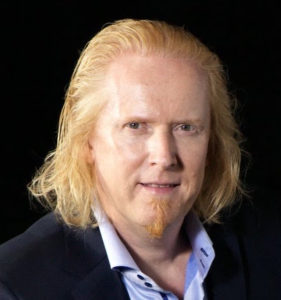
For Kathryn Bigelow’s disturbing true drama, Detroit, sound designer/re-recording mixer, Paul Ottosson had to sonically re-create the chaos of the 1967 Detroit race riots, both on and off camera. The sound not only had to support the action on screen, it had to build the world of the story that was happening in the distance.
“It is a really complex sound,” explained Ottosson. “Even though there are not a lot of action scenes, it might be harder than the big action movies that I’ve done. Most of those are paint by numbers, designing sound specifically for the things you see on the screen. For this film there is none of that. Most of what we hear takes place off-screen. We are building this huge world.”
For Ottosson, that meant researching what was around a particular building, the Annex, and the particular block where most of the film takes place, while also taking into account that the story takes place in 1967.
“I had to go look at old maps and identify some train tracks a mile and a half away, to do a lot of research to find a palette to start building from,” shared Ottosson. “Time of the year. Small things like, what kind of insects are in this area…you learn a lot of things you would not have learned otherwise.”
There is source music playing outside the hotel; a radio, a record and television playing in various rooms; and multiple discussions. “A scene like that was harder to mix than any action picture I had ever worked on,” admitted Ottosson. “But it was one of those scenes that when you mix it and get it to a place where everything is working, it is such a fragile mix. Any slight adjustment would take away the tension from something we shouldn’t.”
The filmmakers’ intent was to “stay true in all aspects” to what you hear on the screen. That included how the police were sonically perceived in the movie. At that time, the police cars were equipped with big analog radios. There were no policewomen doing dispatch, so all the voices over the radio would have been male. There were also police bullhorns blocks away, and helicopters all over the place–all era appropriate.
Ottosson recorded sound specifically for the movie. The biggest recordings were voicing the neighborhood crowds for the first 40 minutes of the film with language that was used in the late 60’s. The walla groups were huge, about 40 people, almost all African Americans, many of whom were able to tap into their own experiences to bring true emotions to the scene. The goal was to verbally build up a riot.
Ottosson used some actors as cops to stir up the emotions of the larger group. Many recordings were done outside, where Ottosson hoped they would feel less comfortable than on a stage. Violent unrest does not start right away, but begins with taunting, building to hostility and anger on both sides, then escalating to a full on riot.
“We prepped everybody that we were going to use some ugly language,” revealed Ottosson. “You see the riots in the movie, how long they are. We kind of did that. It became more and more aggressive. I think it got to the point of people really being angry. It all sounds very real.”
Bigelow wanted sound to be the score for the film. Since there was no score until very late in the film, the audio had to fill the emotional space usually occupied by music. Ottosson’s “trick” was to build up the world until it was almost overwhelming, so he could take things away, giving the audience a reprieve from the intensity of what was going on. “Usually you would do that with music,” he explained. “It can be hard to describe what we do with the sound in a movie. Most of the time it’s to underscore the story. To make you feel something or not feel something.” Working on the film was an intense experience for the crew. Ottosson credits them for working harder on this production that anything they had done before.
“Kathryn’s movies, I’d say most of them off the top of my head, are always from a perspective of someone in the movie. We tried to get you to be not just a viewer, we want you to be a participant in it,” Ottosson added. “Imagine being in that Annex with all this insanity going on. You would be on edge. You wouldn’t know what to do. That was our goal. To get you to feel the brutality of the scene…like you’ve been there with them. Working on a movie like this, it changes you a bit for the better.”





